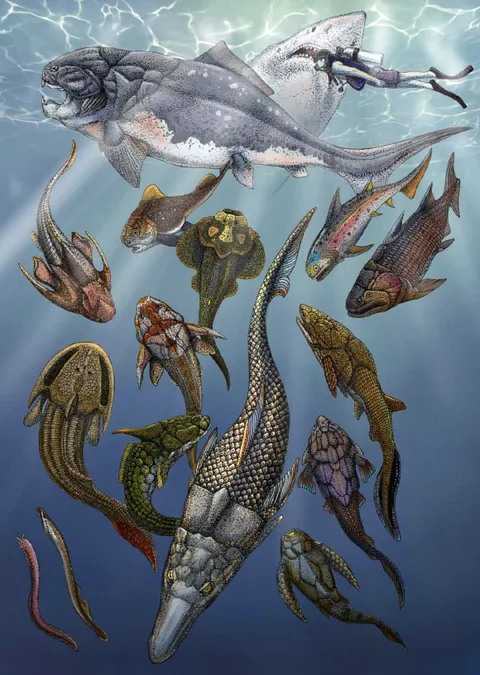
Unlocking the Secrets of the Deep: How Ocean Oxygenation Fueled Animal Expansion 390 Million Years Ago
2025-08-26
Author: Arjun
A Major Evolutionary Leap 390 Million Years Ago
Imagine a world where the depths of the ocean were still a mystery, untouched by life. Fast forward to 390 million years ago during the Devonian period, when everything changed. New groundbreaking research from a collaborative team of scientists at Duke University, the University of Washington, NASA’s Virtual Planetary Laboratory, and Caltech unveils how a significant rise in deep-ocean oxygen levels opened the doors for marine animals to explore previously uninhabited underwater territories.
The Role of Woody Plants in Oxygenation
This oxygen surge wasn’t a random occurrence; it was intricately linked to the spread of woody plants on land. As these plants flourished, they released oxygen into the atmosphere, which ultimately enhanced oxygen levels in the deep sea. Dr. Michael Kipp from Duke University asserts, “This study provides compelling evidence that oxygen shaped the timing of early animal evolution, particularly for jawed vertebrates venturing into deep ocean habitats.”
Unraveling the Timeline of Deep-Sea Oxygenation
Previously, scientists believed deep-ocean oxygenation was a one-time event at the dawn of the Paleozoic Era. However, new findings suggest this process unfolded in stages—first nearshore waters became livable, and then deeper environments followed suit. By analyzing ancient sedimentary rocks, this team identified two significant oxygenation events in history.
Selenium: The Key to Understanding Ancient Seas
To uncover the mysteries of past oxygen levels, researchers focused on selenium isotopes in marine sediments. They gathered 97 rock samples from five continents, dating back 540 million years. The analysis revealed crucial insights: while an initial oxygenation event occurred around 540 million years ago, a more permanent rise took place between 393 and 382 million years ago during the Middle Devonian.
The Ripple Effect: Bigger Animals and Ecosystem Changes
With the arrival of stable oxygen levels, marine life flourished. The fossil record indicates that jawed fish, termed gnathostomes, and other creatures began to diversify and occupy deeper waters. Interestingly, these changes coincided with a significant period of oceanic evolution referred to as the mid-Paleozoic marine revolution.
A Warning from the Past
Dr. Kipp cautions that today’s oceans are generally rich in oxygen, maintained by a delicate balance with the atmosphere. Yet, human activities have introduced nutrients from fertilizers, leading to algae blooms that deprive certain areas of oxygen. “This research illustrates the crucial relationship between oxygen and marine life. It’s a balance perfected over 400 million years, and we risk disrupting it in a mere few decades,” he warned.
A Fascinating Study That Sheds Light on Our Oceans
Published in the *Proceedings of the National Academy of Sciences*, this study not only deepens our understanding of ancient marine ecosystems but also serves as a powerful reminder of the ongoing need to protect our oceans. As we learn from the past, will we choose to safeguard the future of marine life?


 Brasil (PT)
Brasil (PT)
 Canada (EN)
Canada (EN)
 Chile (ES)
Chile (ES)
 Česko (CS)
Česko (CS)
 대한민국 (KO)
대한민국 (KO)
 España (ES)
España (ES)
 France (FR)
France (FR)
 Hong Kong (EN)
Hong Kong (EN)
 Italia (IT)
Italia (IT)
 日本 (JA)
日本 (JA)
 Magyarország (HU)
Magyarország (HU)
 Norge (NO)
Norge (NO)
 Polska (PL)
Polska (PL)
 Schweiz (DE)
Schweiz (DE)
 Singapore (EN)
Singapore (EN)
 Sverige (SV)
Sverige (SV)
 Suomi (FI)
Suomi (FI)
 Türkiye (TR)
Türkiye (TR)
 الإمارات العربية المتحدة (AR)
الإمارات العربية المتحدة (AR)